Pros and Cons
Before we discuss the advantages and disadvantages of glass blocks, let’s look at the terminology. A glass block is a sandwich-like structure with thick glass on the outside and an empty air cavity inside.
Advantages:
- They have a high sound insulation rating. The air gap muffles 60-70% of external noise.
- They let in sunlight. You can install lighting inside or use bricks instead of a window frame.
- They are particularly durable. A partition made of glass blocks can be compared to a brick one – it will last for decades.
- They are not afraid of water. You can often see glass blocks in the interior of a bathroom, kitchen, shower or even a swimming pool.
- They are easy to care for. It is enough to wipe off dust with a damp cloth.
- They conduct heat well. A relatively warm material, so glass blocks are not uncommon in the living room interior.
- They do not pose a health hazard. Glass is more environmentally friendly than plastic and other alternatives.
Glass bricks have no disadvantages. Therefore, if you do not have a clear anchor with Soviet interiors or you are not afraid of such a prospect, be sure to use glass blocks in the interior!
The last nuance is the cost. The average price per piece ranges from 200-300 rubles. On the one hand, the cost may seem unreasonably expensive. On the other hand, when building a wall with glass blocks, you only spend money on the material itself and glue — no surface preparation (plaster, putty, primer).
What types of glass blocks are there?
Square or rectangular bricks are usually used to build walls or decor from glass blocks. The sizes of squares have remained since the times of the USSR — 19*19*8 cm or 24*24*8 cm. Rectangles make up exactly half of the basic shape: 19*9.5*8 cm.
For ease of use and a more decorative appearance, special end blocks are produced — corner blocks with rounded edges, cut into a quarter circle. Due to these elements, the erected walls look complete.
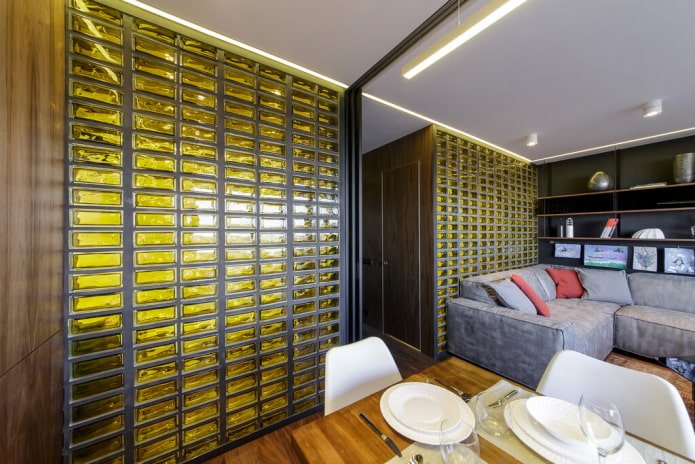
The photo shows amber glass blocks in the living room
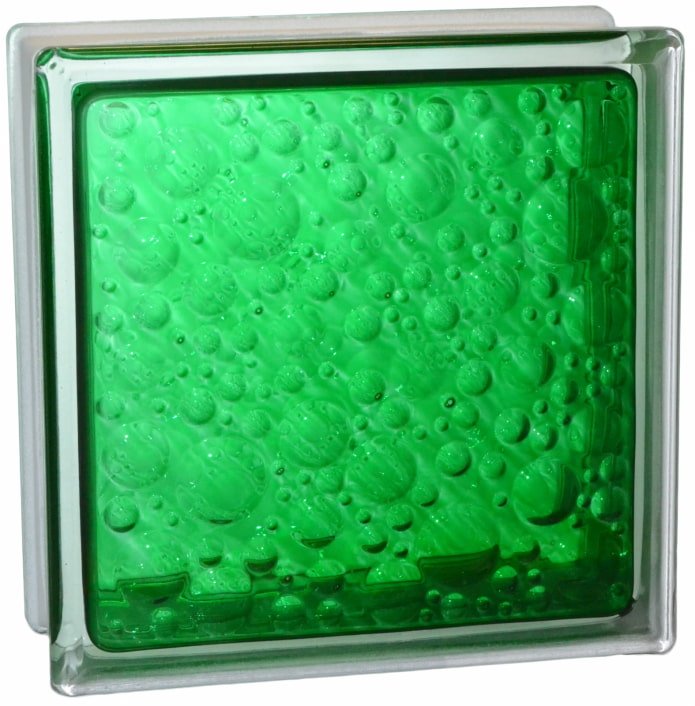
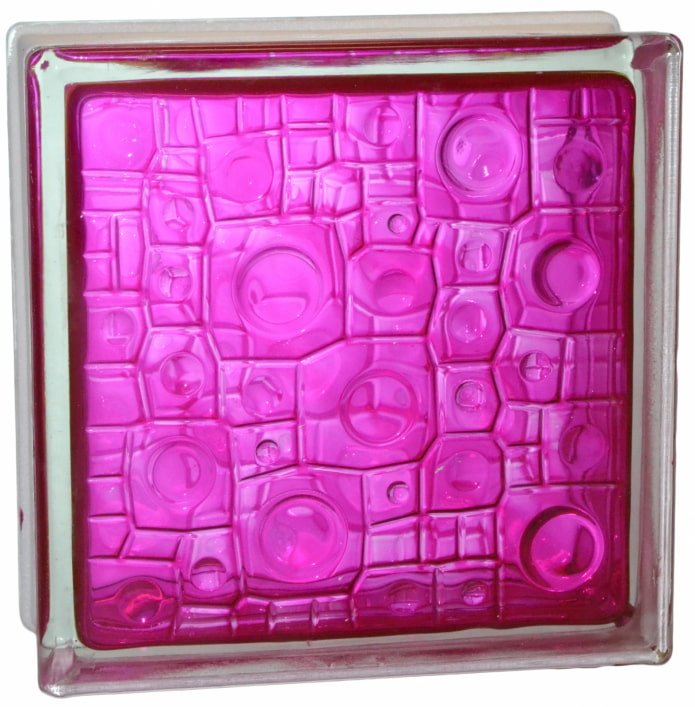
30-50 years ago, colored glass blocks were greenish because they were made from ordinary, unrefined glass, which was the cheapest. Transparent, crystal clear ones were less common. Modern manufacturers have expanded the range by adding a pleasant blue, rich green, neutral brown, as well as yellow, red, purple, pink and other colors.
The color palette is expanded by adding matte glass to gloss: so everyone can definitely find something to suit their style and taste
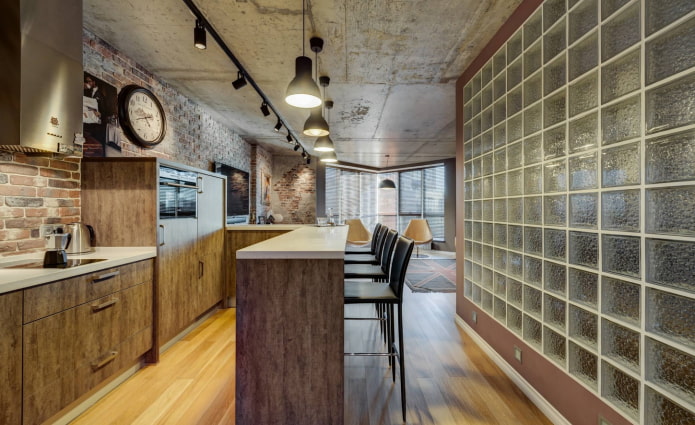
The photo shows glass in a loft style interior
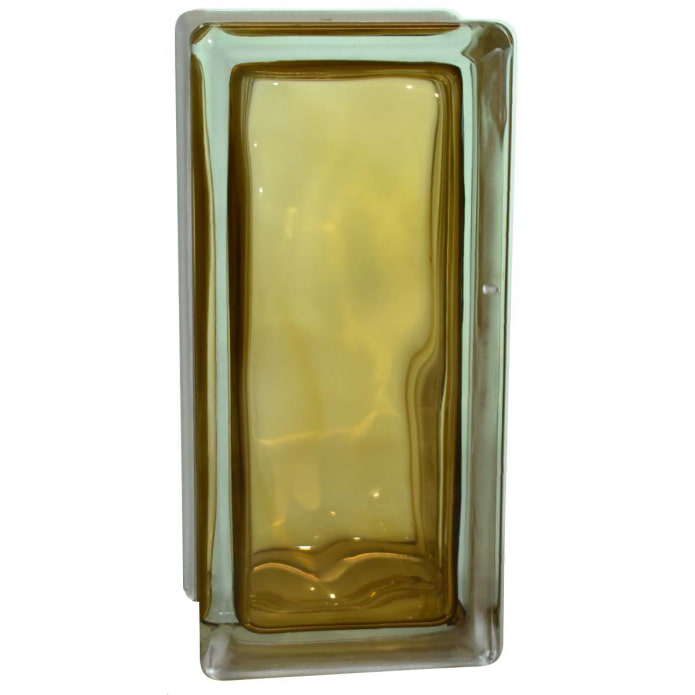
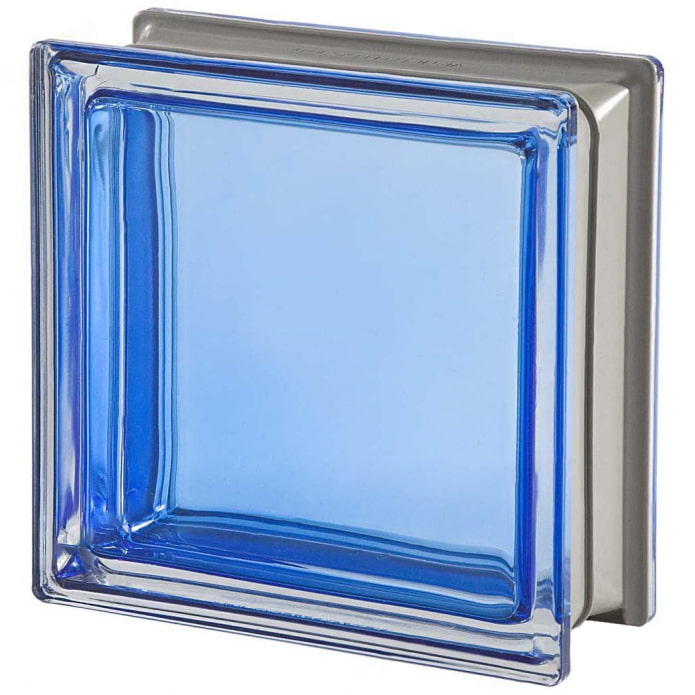
Original inserts are added to the usual colored or transparent ones: glass cubes, inside which there are compositions of stones, plastic fish or insects, flowers, fruits.
By texture, they are distinguished as smooth and textured. The second category includes wavy, lattice (Inca), bubble, waterfall-imitating, shagreen.
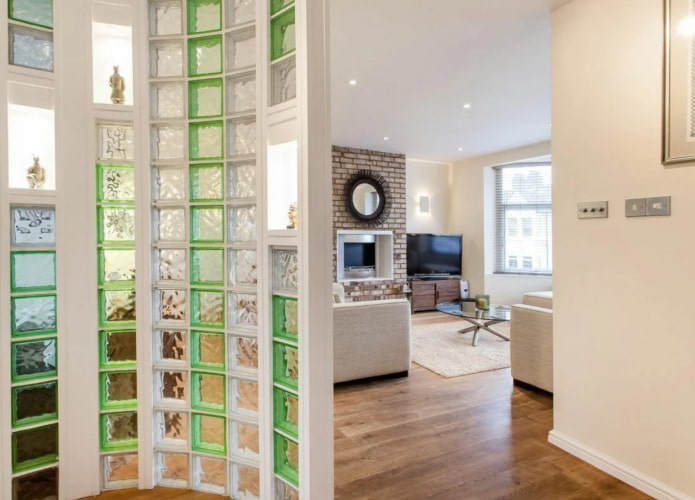
Application options
Glass blocks are used to solve various problems: from zoning to decorating space.
Partitions
The construction of walls can be useful in studios – for example, to highlight the sleeping area in an open space or clearly separate the space for cooking, rest. Glass block partitions are often used to separate showers in bathrooms.
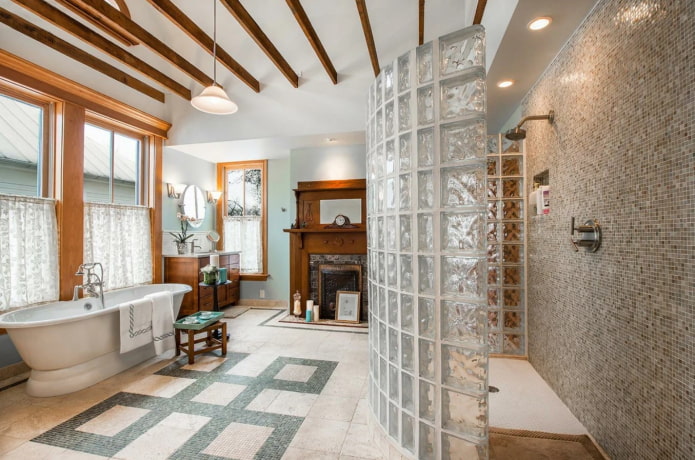
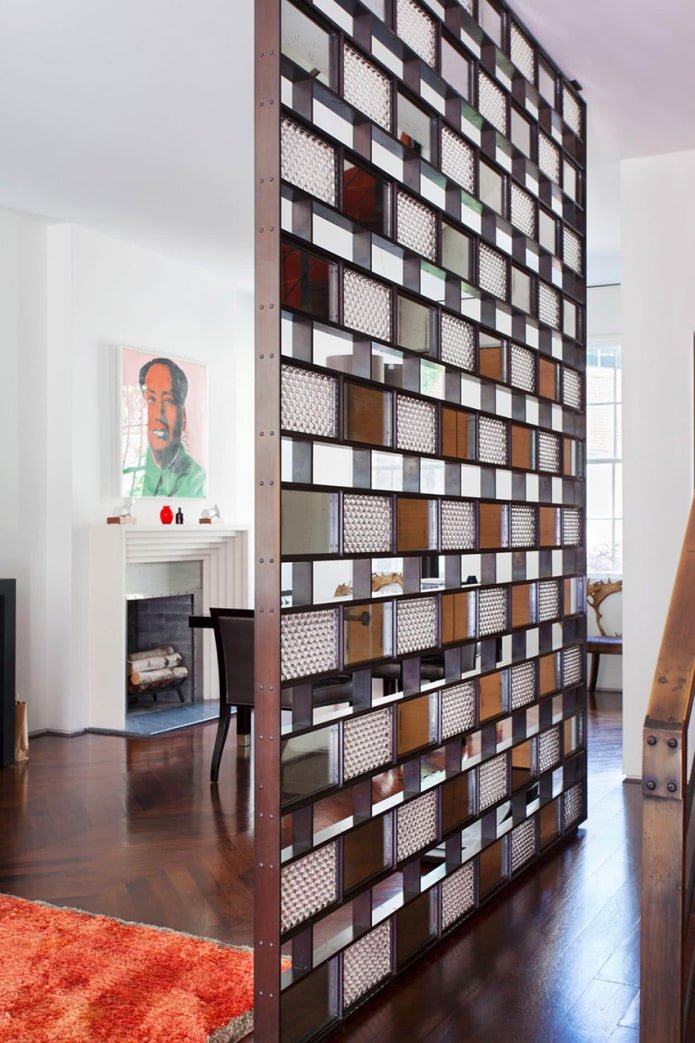
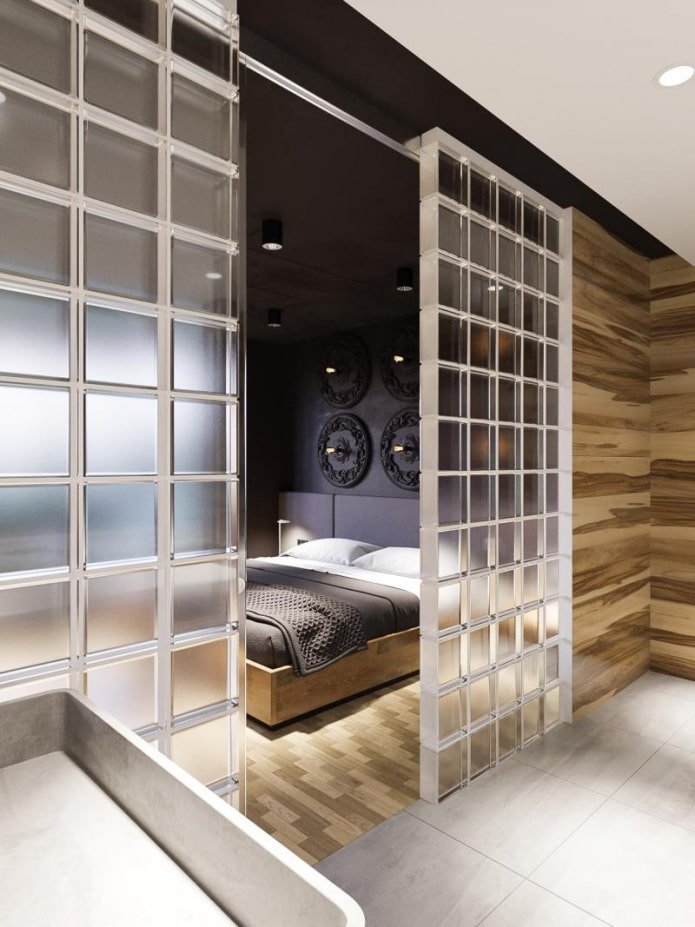
The design of glass block partitions looks great both on their own and in combination with other materials: they are sewn into plasterboard, creating a kind of glowing windows or rows.
When you need to build a large wall, glass is combined with brick, concrete blocks, since by itself it looks too cold, reminiscent of ice cubes.
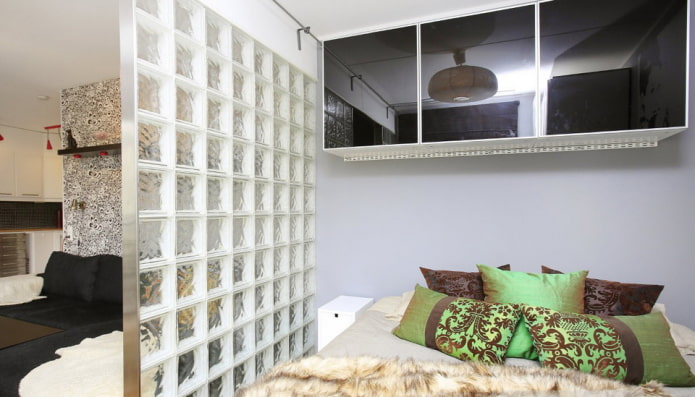
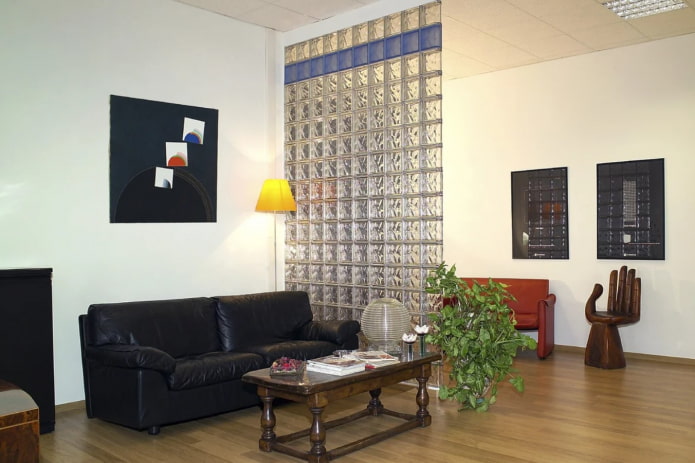
Windows
Glass bricks are used to decorate internal windows in living spaces or external ones – in private houses in bathrooms rooms to hide from the prying eyes of neighbors.
For example, by installing glass blocks between the bathroom and kitchen in place of the transom, you will simultaneously receive decor and additional lighting. And by cutting an opening in a blank wall between the living room and the bedroom without a window, you will make the recreation area more comfortable due to the penetration of natural light.
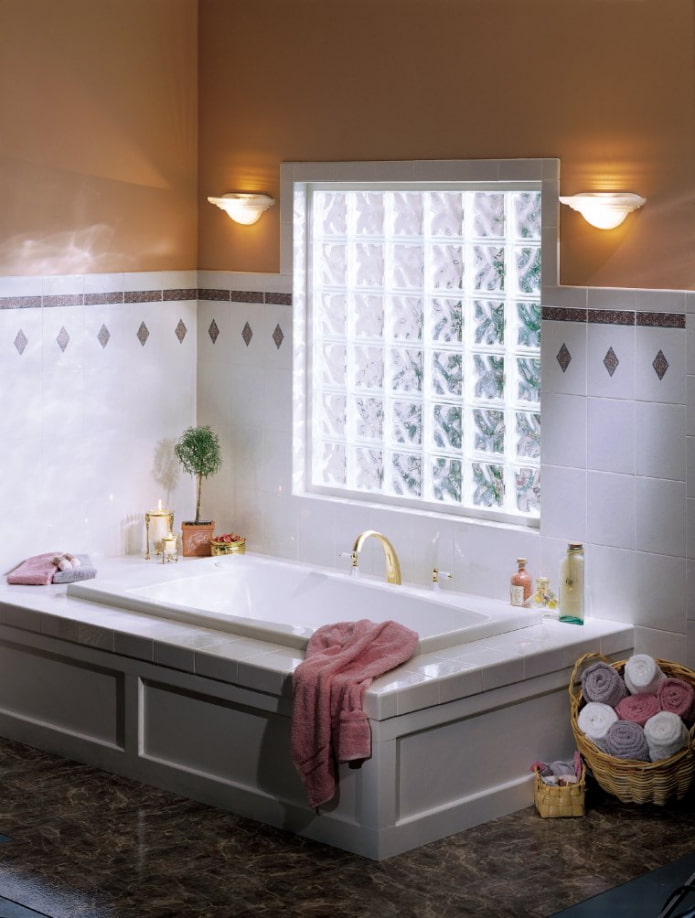
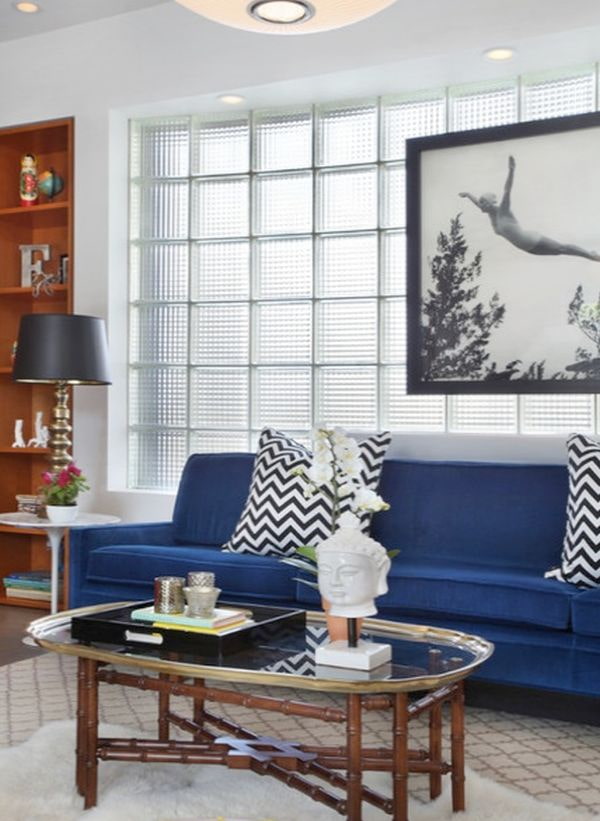
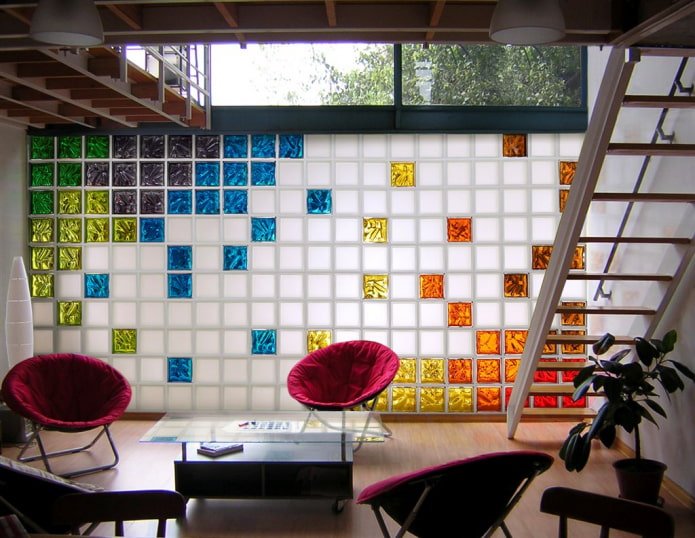
Furniture
The material is so versatile that glass blocks are often used to make furniture in kitchen interiors! They act as a stand under the tabletop or bar counter.
Add lighting to the glass, you will get a modern original decoration of the kitchen.
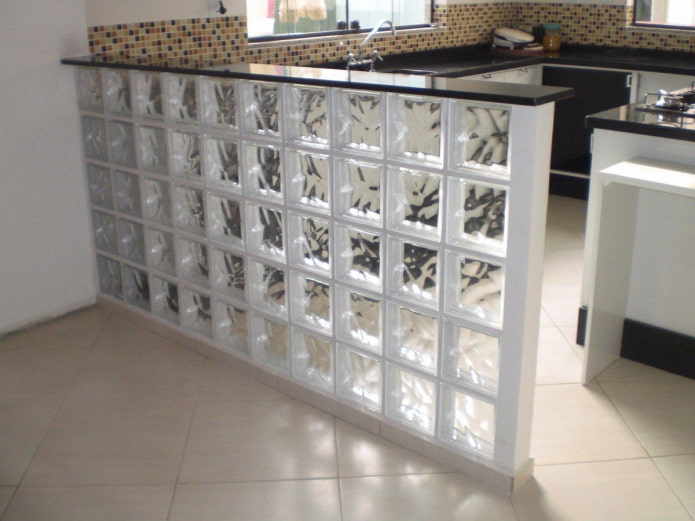
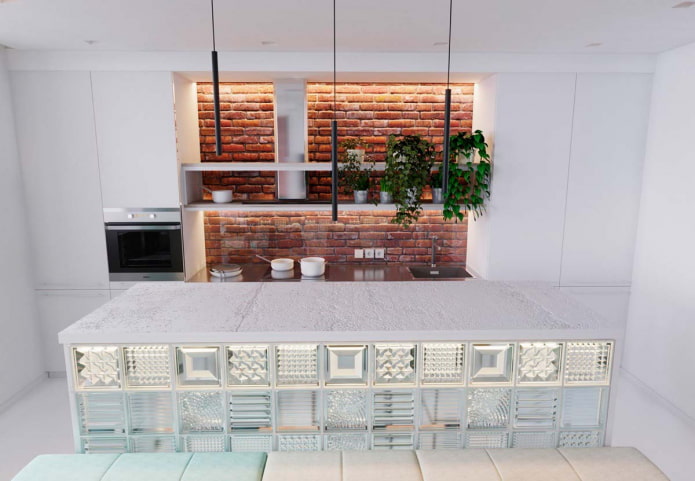
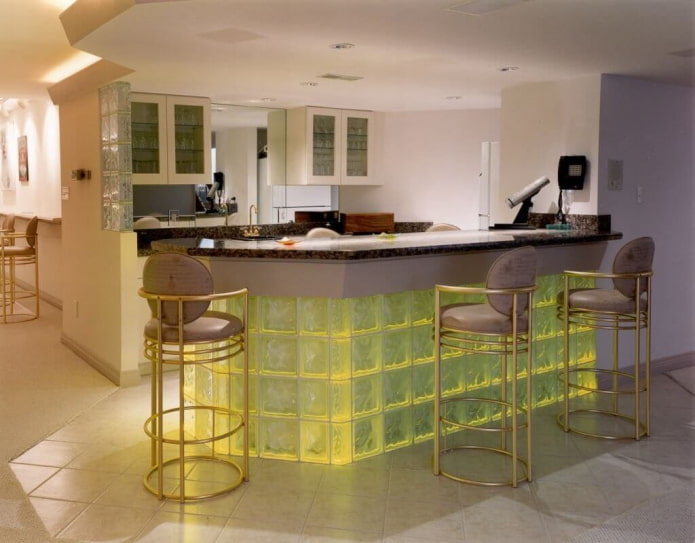
The photo shows a glass bar counter
Apron
A glass apron above the work surface is not only practical, but also aesthetically pleasing. The surface is easy to clean, is not afraid of water, grease, high temperatures, and lets light through: in general, it is suitable in all respects as a replacement for tiles or skinali.
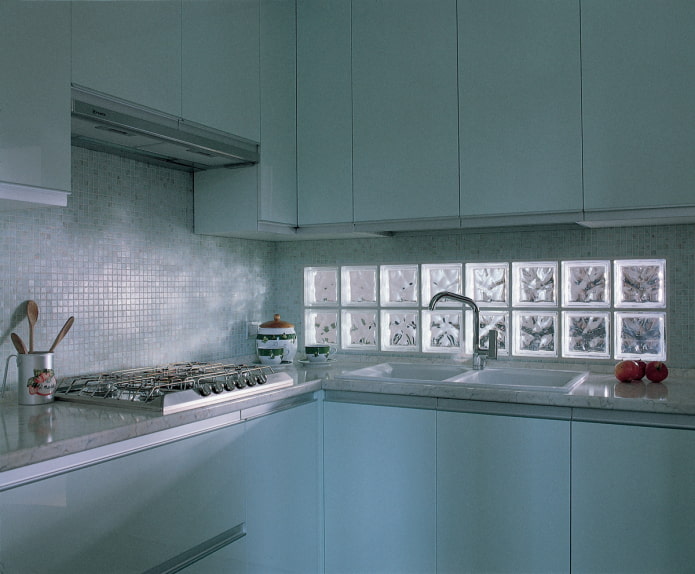
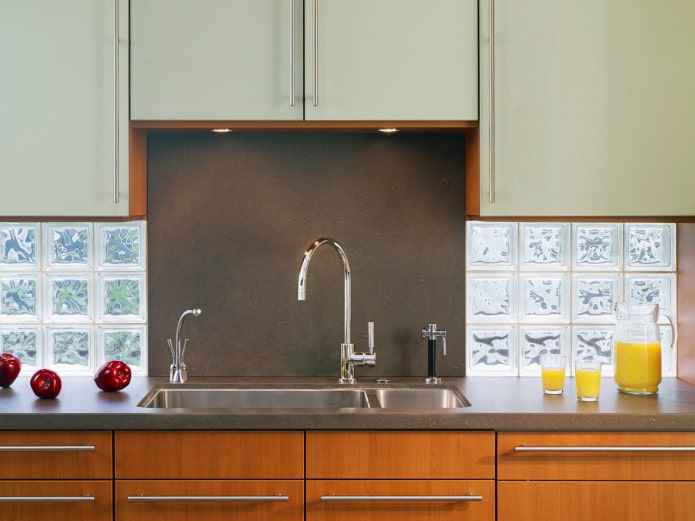
Decorative inserts in the wall
Glass block wall design is used when you want to use this unusual material in a limited way. Squares, like pixels, can be assembled into any shape: from abstract to quite recognizable.
If desired, lighting can be built in, which acts as an evening dim light or a night light.
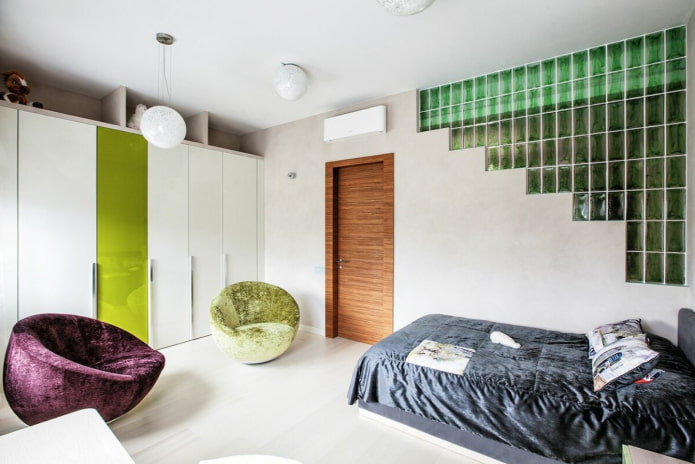
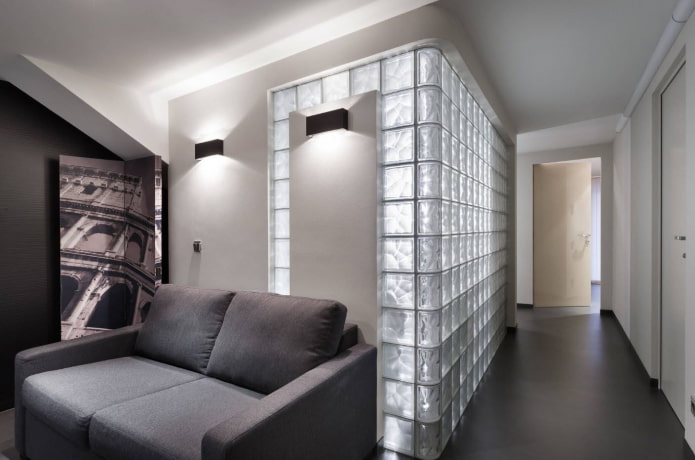
How do they look in the interior of rooms?
There are no places where glass blocks are not used: in the bathroom they are loved for their water resistance, in the kitchen for their ease of maintenance, in the living room for the conductivity of heat, light, visual lightness.
Living room
Glass blocks are used for partitions between the hall with the bedroom, kitchen, study. Or as decorative inserts in the walls.
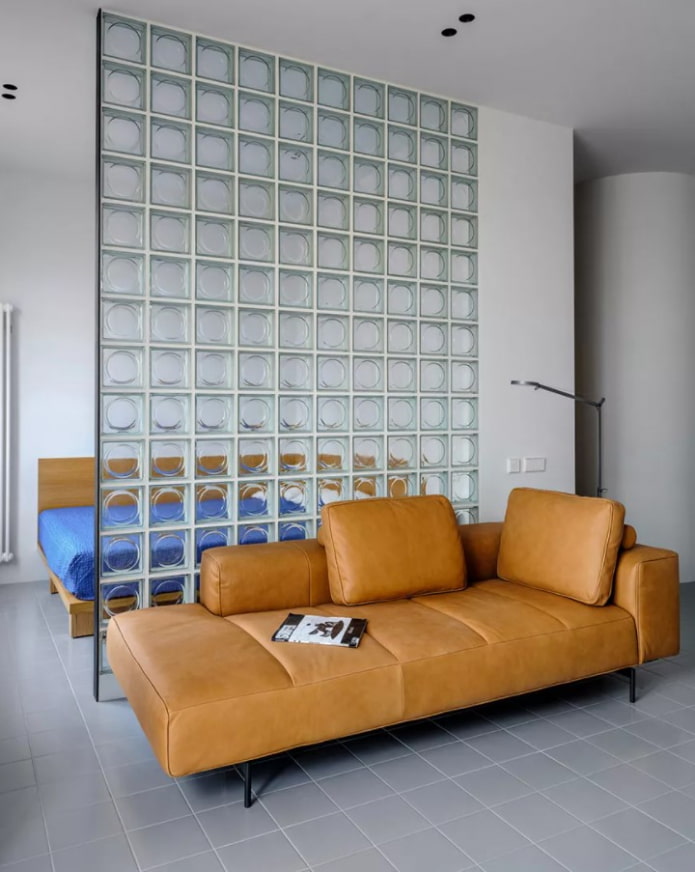

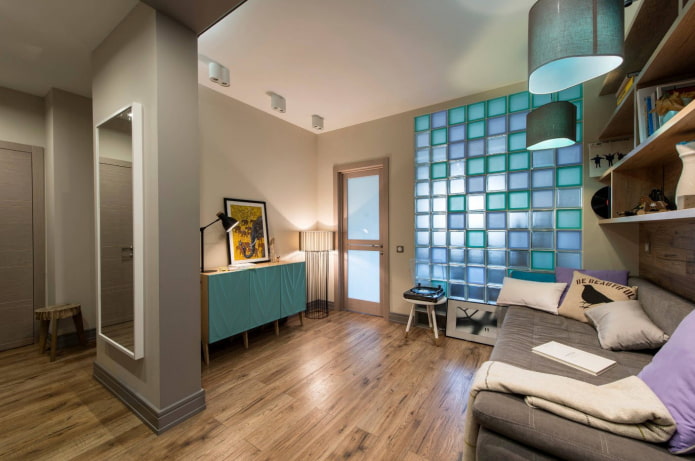
Kitchen
There are several applications for laying:
- wall between dining room, work area;
- base for bar counter, dining table;
- finishing vertical work surface (apron).
Due to its easy-to-clean properties and high light transmittance, glass is an excellent substitute for tiles in the kitchen, even surpassing them.
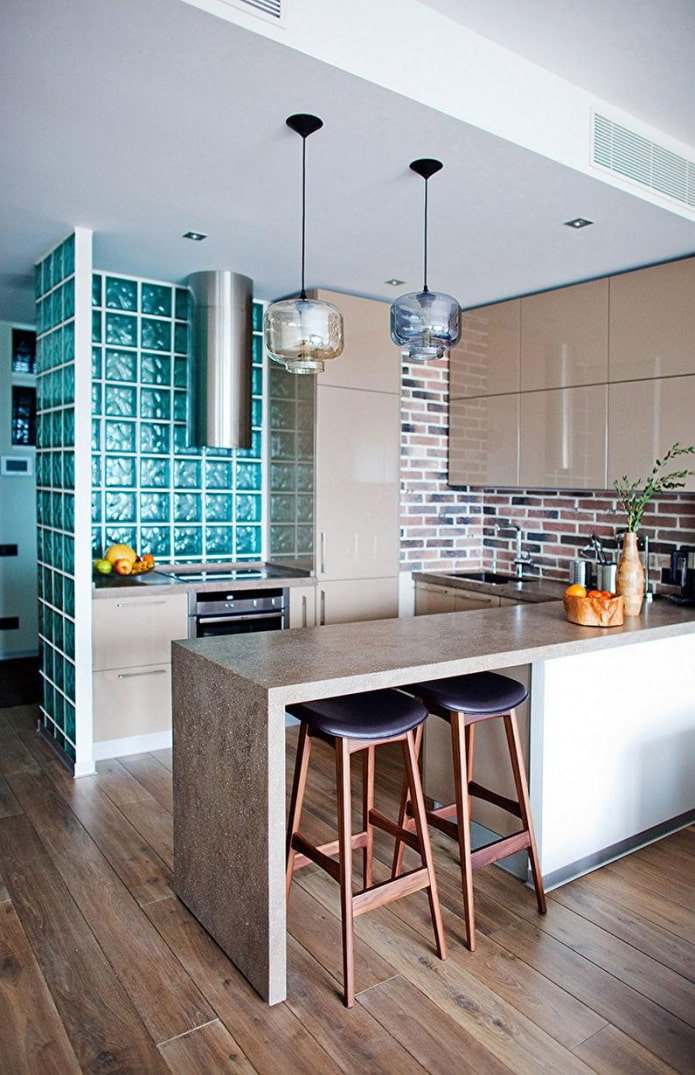
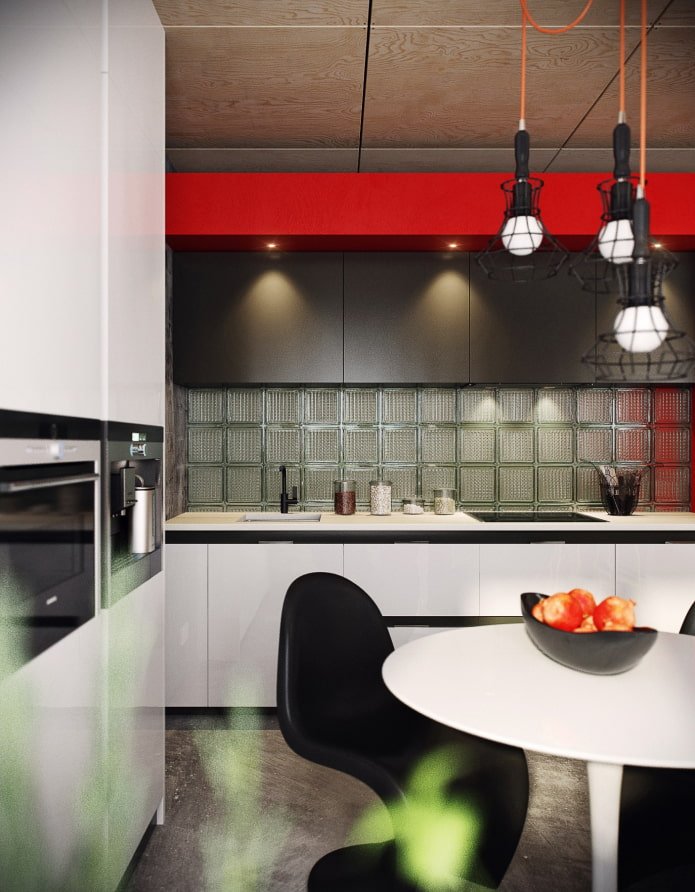
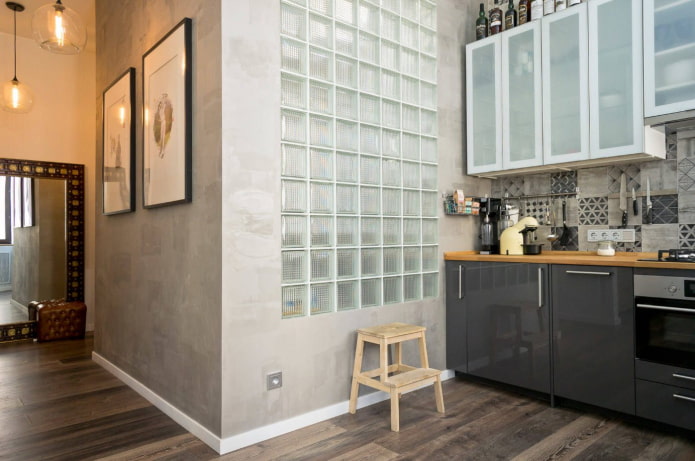
The photo shows a wall of glass bricks in the kitchen
Bedroom
Use glass blocks in the bedroom sparingly: in large quantities they create a cold atmosphere, since glass looks like ice. However, if you take beige, cream, peach, yellow, orange blocks as a basis, the iceberg effect can be avoided.
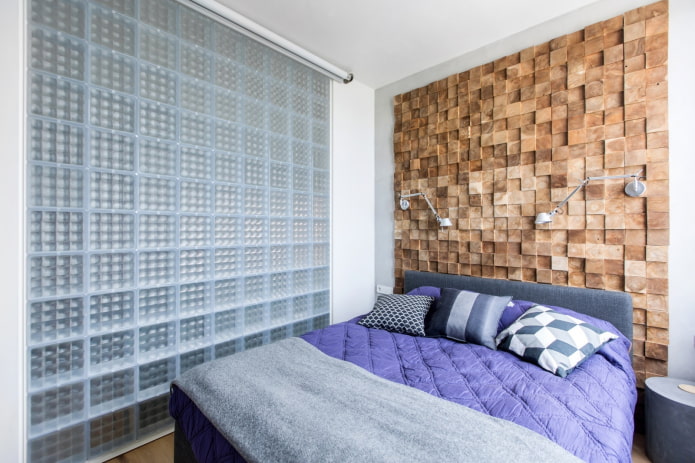
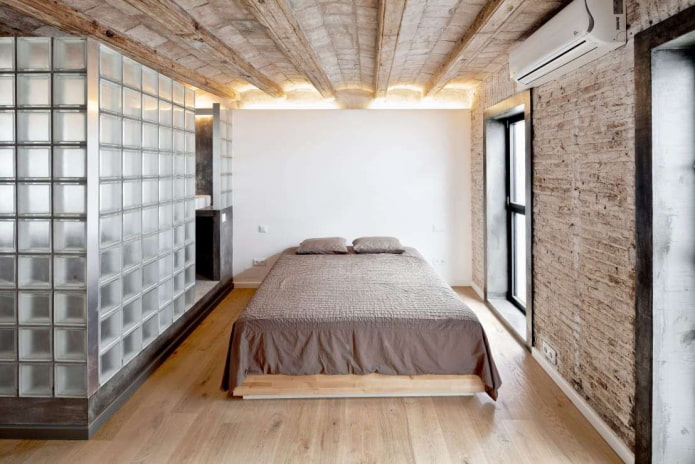
Bathroom
In bathrooms, you don’t need to limit yourself in the use of glass: it is used to enclose a shower stall, separate the toilet from the bathroom, lay out an apron over the sink, fill the opening between the kitchen or toilet.
To make the abundance glass blocks do not look boring, combine colors or add decorative inserts: best suited are those with beach motifs (fish inside, sand, corals, seaweed). Texture – smooth, or wave, lattice.
Remember: the smaller the convex parts, the more difficult it will be to clean the walls.
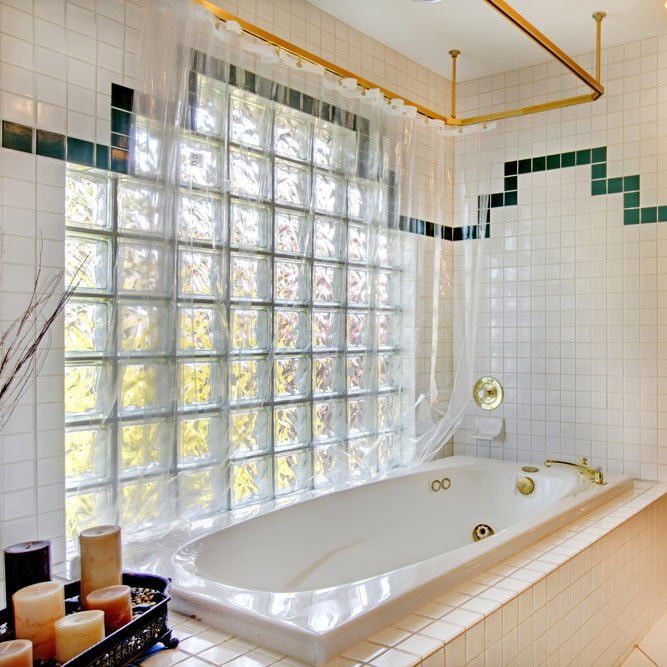
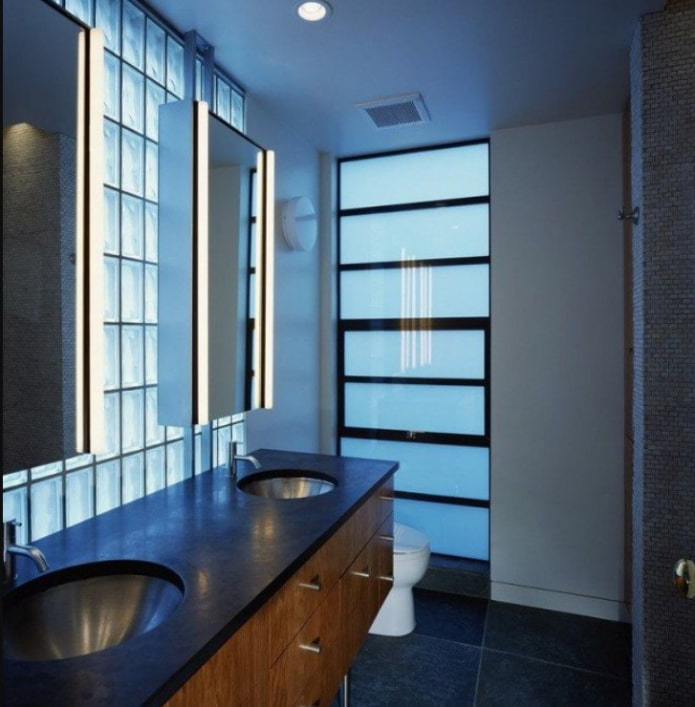
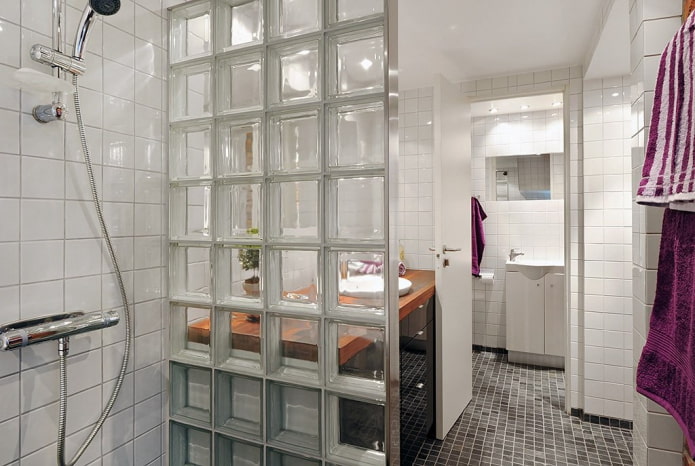
The photo shows a transparent wall for a shower
Hallway
Glass blocks in hallways serve as a divider between the entrance group and the living area. The walls are made blank or with windows, where it is convenient to put vases, figurines, and other decorations.
By replacing concrete or brick walls with glass ones (provided that you are demolishing non-load-bearing structures!), you will ensure that light enters the corridor during the daytime and save on electricity.
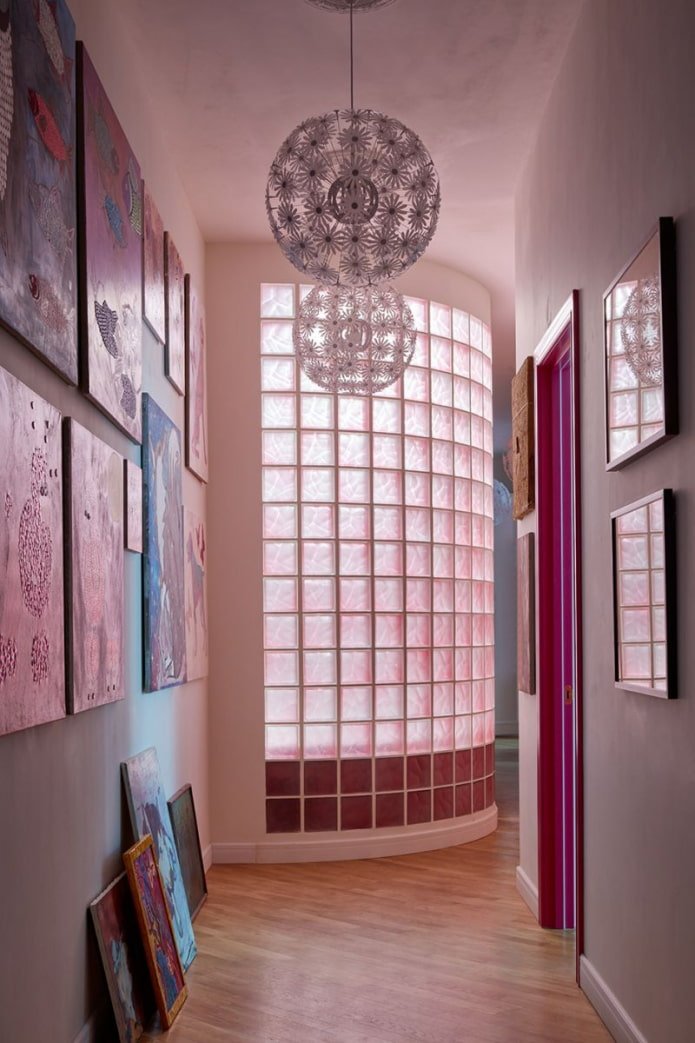
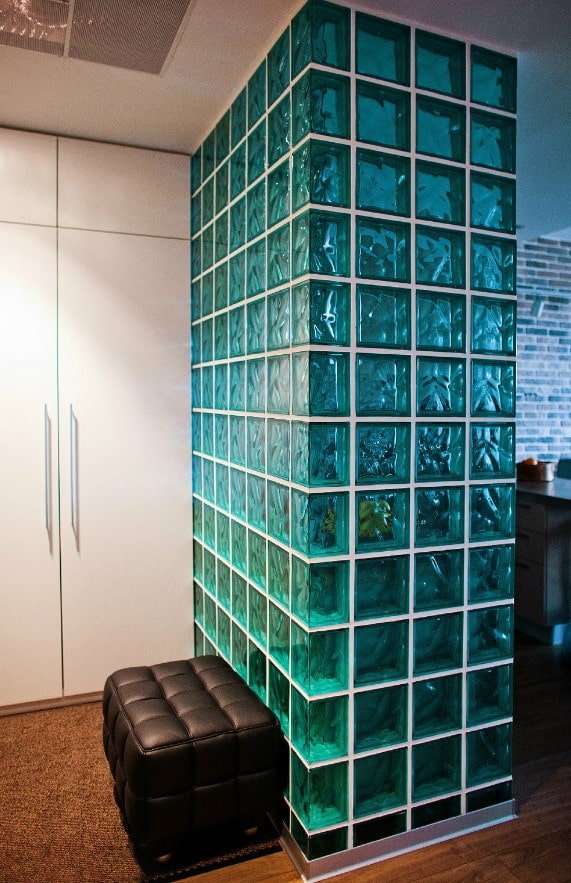
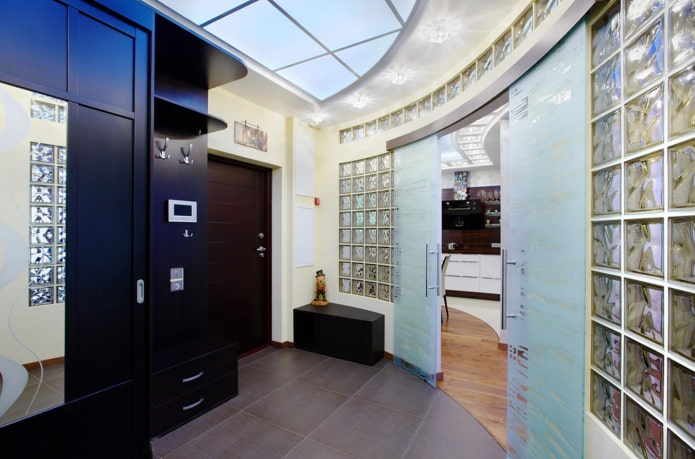
Balcony
They are used as in other rooms: they are divided into zones, and used to decorate furniture. It is better not to use them to replace windows, because the transmittance of rays is less than that of a double-glazed window.
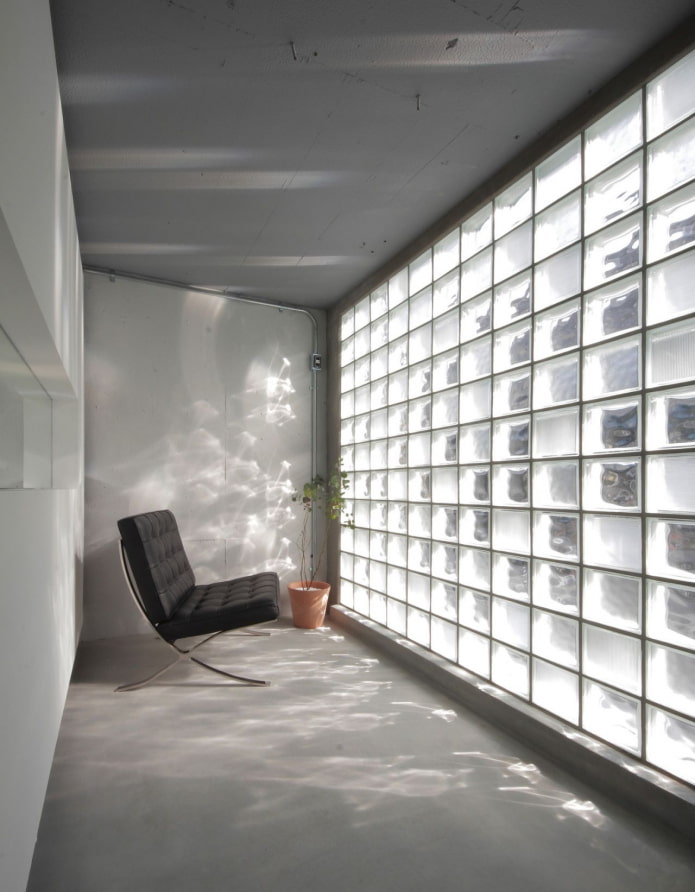
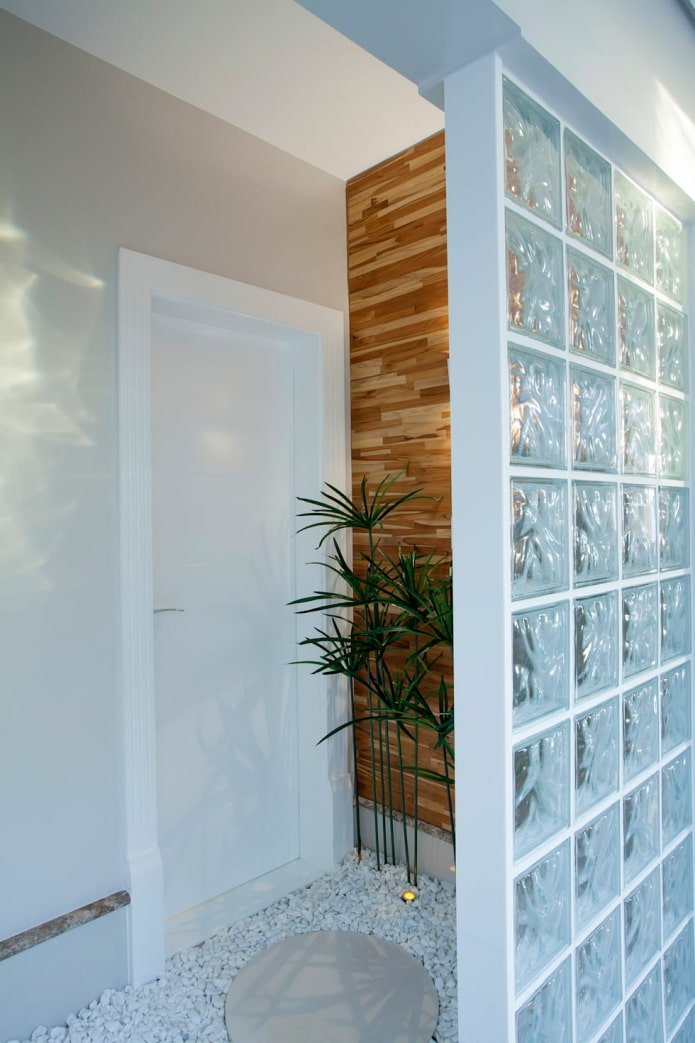
See photos of the use of glass blocks in the interior of an apartment in the gallery: we have collected the most original and stylish solutions!
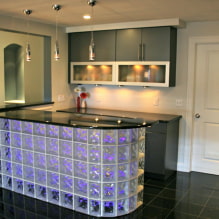
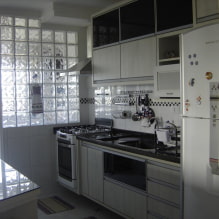
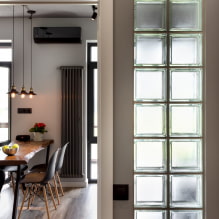
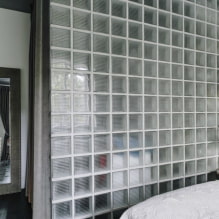
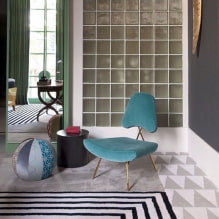
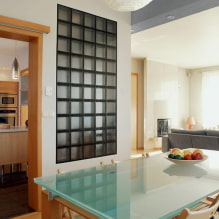
Now reading:
- Perlite vs. Vermiculite: What Are the Differences and Which is Better for Plants and Seeds?
- 10 Creative Solutions for Organizing Pan Storage
- 30 beautiful ornamental shrubs for your garden with photos and names.
- Openwork lambrequins: 70+ photos and the best ideas for window decoration.
- Your Comprehensive Guide to Buying a Used Opel Ampera